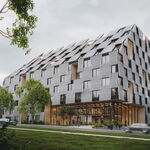I suspect traffic engineering studies are about 80% BS pseudoscience where the conclusion is always 'build more lanes'.
they use a long list of assumptions. The studies are often wrong because the assumptions turn out wrong.
The 413 study is interesting as it's now 10 years old and we can compare a bit the original projections with what has actually happened since. A couple of things come to light with this:
1. Population growth has been much stronger than originally assumed
2. Transit expansion has become more ambitious than originally assumed, with the study not including GO RER or Toronto's subway expansion in it's modelling, instead having the old, less ambitious All Day 2 Way GO plans included.
3. Traffic patterns have changed tremendously, particularly during peak hours as a result of COVID
4. Growth occurs in different areas than originally planned.
In the case of the 413, growth in the GTA has been faster than originally assumed. Much more growth. We already exceed the population projections assumed for 2031 in 2024. This would mean that we need more infrastructure. Also working for the 413, industrial growth has resurged a much faster rates than anticipated in 2013, driving faster freight growth levels than anticipated.
But working against the highway is the fact that growth has been occurring through intensification within Toronto at far higher rates than anticipated in 2013, when it was expected that more growth would go to the 905 than actually has. Modal shifts have also changed in ways not anticipated. Suburban modal shares in Peel were assumed to be 17% in 2031 for example, while they are already right around that today and growing. Growth within many 905 areas have also actually been slower than anticipated, particularly York Region. Brampton is the one area of the 905 that is basically achieving it's original growth projections though and is the location most served by the 413.
So the 413 "justification" study as a whole is dated, and MTO has updated it internally from my understanding. The update is not available for public viewing however. I don't think, looking at the underlying assumptions, that it has become wildly incorrect though. Some things have occurred differently than anticipated to work against the highway, others have occured to work for the highway.
More generally, many roads justifications over the last 30 years assumed continuous auto trip growth. In the US particularly, this was not true at all between around 1990 and the late 2010's, with miles travelled per capita remaining basically flat. This phenomenon made many roads projects unnecessary as underlying assumptions were fundamentally wrong.
In the case of the 413 however, most of it's justification comes from more people, not people driving more, and miles per capita in the US (and Canada as well from my understanding) has started going up again over the last 5-10 years too.




